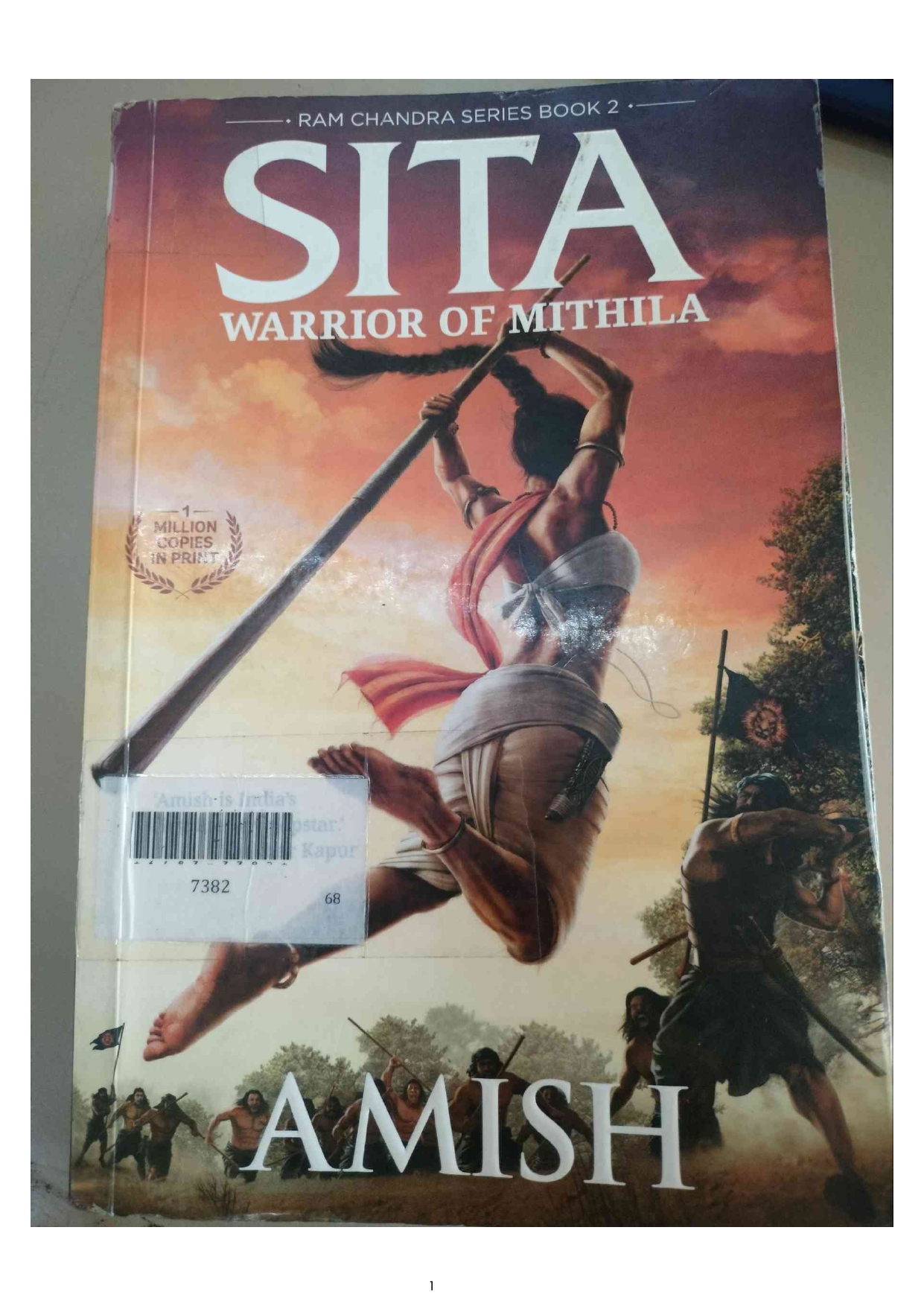
Sita: Warrior of Mithila
Original Title
Sita: Warrior of Mithila
Subject & College
Series
Publish Date
2017-01-01
Published Year
2017
Publisher, Place
Total Pages
361
ISBN
9789386224583
Format
Paperback
Country
India
Language
English
Readers Feedback
Sita: Warrior of Mithila
(Review By Nupur Abhijit Sonawane, Student-M.V.P.Samaj’s Sharadchandraji Pawar College of Architecture, Nashik) Sita: Warrior of Mithila by Amish Tripathi reimagines the life of Sita, a...Read More
Nupur Abhijit Sonawane
Sita: Warrior of Mithila
(Review By Nupur Abhijit Sonawane, Student-M.V.P.Samaj’s Sharadchandraji Pawar College of Architecture, Nashik)
Sita: Warrior of Mithila by Amish Tripathi reimagines the life of Sita, a central figure in Indian mythology, portraying her as a fierce warrior and a leader rather than a conventional damsel. The book begins with her early life as the adopted daughter of King Janak and Queen Sunaina of Mithila. Sita is raised in a progressive environment, where she is taught to value knowledge, righteousness, and strength. Despite being a princess, she is trained as a warrior and emerges as a skilled archer and tactician. Her exceptional abilities and sense of justice lead her to be chosen as the *Prime Minister of Mithila* at a young age.
As Sita grows, she learns about the challenges her kingdom faces and takes steps to ensure its prosperity and security. She forms alliances and earns the respect of her people, proving her worth as both a leader and a protector. During her journey, she encounters Ram, the prince of Ayodhya, who shares her ideals of Dharma and righteousness. Their bond deepens, leading to their marriage.
The story also introduces the looming threat of Raavan, the ruthless king of Lanka, who is depicted as a brilliant yet morally corrupt individual. Sita’s strength and intelligence make her a significant figure in the larger battle between good and evil. The book ends with Raavan abducting Sita, setting the stage for the epic confrontation in the next installment of the series.
Teachings and Messages
The book portrays Sita as a strong, independent leader, challenging traditional narratives that often depict her as submissive. It emphasizes that women are as capable as men in leadership, warfare, and decision-making.
Sita’s journey as a Prime Minister highlights the qualities of a great leader—vision, empathy, and the ability to make tough decisions. She places her people’s welfare above her own comfort, embodying selflessness and dedication.
The central theme of the book is adhering to Dharma, or righteous conduct. Sita consistently upholds her principles, even when faced with personal loss or danger.
Sita’s resilience and courage inspires to stay steadfast during challenges. Her ability to face Raavan and other adversaries with determination showcases her inner strength.
The book stresses the importance of teamwork and alliances in overcoming larger challenges. Sita’s leadership involves bringing people together for a common cause.
The book inspires to believe in their abilities and break free from societal expectations or limitations. Sita’s life is a testament to how strength and knowledge can empower individuals to achieve greatness.
Sita’s adherence to Dharma teaches that staying true to one’s values is essential, even when the path is difficult. It is a reminder to prioritize integrity over convenience.
Sita’s decisions as a leader emphasize the importance of foresight and planning in tackling problems effectively.
Sita balances her warrior-like strength with compassion for her people and loved ones, showing that true power lies in kindness and fairness.
Her training and education from a young age highlight the need for preparation and constant learning to face life’s uncertainties.
Sita: Warrior of Mithila teaches readers to embrace their inner strength, value justice, and lead with purpose. It redefines the notion of heroism, showing that it isn’t limited by gender or circumstance.
